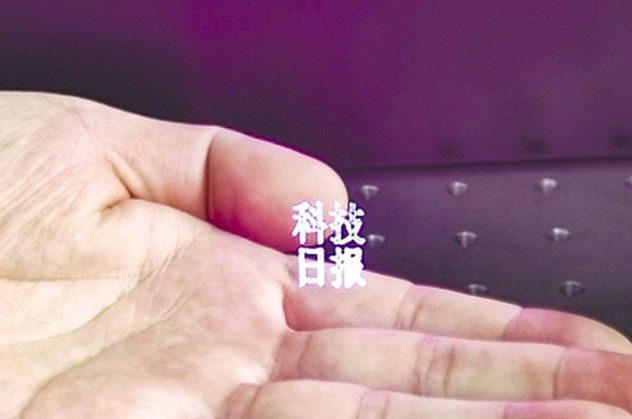Chinese Scientists Introduce a Laser That Creates Floating Text and Images in the Air.
Lasers are commonly used to create a variety of optical illusions, but previously they required dust or clouds as a medium.

The name of the Science and Technology news site etched by laser – (Photo: SCMP)
Recently, a research team at a laboratory in Wuhan, China, developed the world’s most sensitive aerial writing laser, according to the South China Morning Post.
The researchers stated that they can write and draw patterns in any medium by using ultra-short laser pulses to strip electrons from air molecules, transforming them into light and creating a ghostly image suspended in the air.
In a demonstration earlier this week at the Hongtuo Laboratory of ultrafast lasers in Wuhan’s Optics Valley, the researchers created characters that were visible from all angles. They were even able to “touch” the characters with their hands.
“With this brand-new device, we can draw in the air without using paper and ink,” said Cao Xiangdong, the chief scientist at the laboratory, in an interview with the Science and Technology news site.
The device works by focusing high-intensity laser pulses in the air to create plasma, or ionized gas, which emits energy in the form of light.
The research team mentioned that they used a 3D scanner to arrange pixels accurately and form characters in the air.
Because of the extremely short pulse duration, the peak power of the laser pen can reach up to 1 million megawatts, rivaling the total power output of utility-scale electricity generation in the United States.
However, the average input power of the device is only a few dozen watts, meaning it can be safely used in everyday settings.
“The display is the culmination of our research over more than a decade,” Cao noted in the report.
To “illuminate” the air, the laser needs to achieve a power density of 100 terawatts (1 trillion watts) per square centimeter.
This poses a challenge for many other laser emitters of the same type. However, the researchers believe that there is still room for improvement in this technology and for more precise control over the distribution of laser pulses, allowing them to create larger, brighter colored images in the air.
Cao’s team hopes that one day this technology will be used practically in fields such as high-precision manufacturing, brain imaging, medical instruments, and quantum computing.
- Boy Builds Telescope to Observe the Surface of the Moon Using Just Wires and a Few Soda Cans
- In Love with a Soviet Spy, Albert Einstein Reveals Secrets of Nuclear Weapon Development
- The Most “Indecisive” Creature in the World: Going Ashore to Try Being a Mammal, Then Getting Bored and Diving Back into the Ocean to Be a Fish


















































